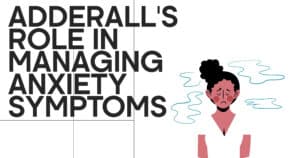In the realm of mental health, anxiety disorders stand as one of the most prevalent challenges, affecting millions globally. As the search for effective treatments continues, neurofeedback therapy emerges as a promising non-pharmaceutical intervention. This blog post explores the potential of neurofeedback therapy in treating anxiety, providing insights into its mechanisms, benefits, and the current state of research.
What is Neurofeedback Therapy?
Neurofeedback therapy, a subtype of biofeedback, leverages real-time displays of brain activity to teach self-regulation of brain function. The therapy is grounded in neuroplasticity—the brain’s ability to reorganize itself by forming new neural connections. By using this inherent adaptability, neurofeedback aims to modify specific brain wave patterns to alleviate anxiety symptoms.
How Neurofeedback Therapy Works
- Brain Activity Monitoring: During a neurofeedback session, sensors are attached to the scalp to measure electrical activity in the brain (EEG). This data is displayed on a computer screen as visual or auditory feedback.
- Training Brainwave Patterns: The feedback helps individuals understand their brain’s activity and learn to manipulate these patterns. For example, patients might play a computer game that rewards them when they produce the desired brainwave patterns associated with relaxation and calmness.
- Reinforcement and Adjustment: Through repeated sessions, individuals learn to reinforce desired brainwave patterns (like increased alpha waves or reduced high beta waves), often linked to reduced anxiety and improved emotional regulation.
The Link Between Brainwaves and Anxiety
Anxiety is often associated with specific brainwave abnormalities:
- High Beta Activity: Excessive beta wave activity, particularly in the frontal and temporal lobes, is linked to heightened alertness and anxiety.
- Alpha Asymmetry: Imbalances in alpha wave activity can increase negative emotions and vulnerability to stress.
Neurofeedback aims to correct these imbalances, promoting healthier brainwave patterns and, consequently, reducing anxiety symptoms.
Benefits of Neurofeedback Therapy for Anxiety
- Non-Invasive and Drug-Free: Unlike traditional medications, neurofeedback does not involve pharmaceuticals, making it an attractive option for those seeking to avoid medication side effects.
- Long-Term Relief: Neurofeedback can train the brain to self-regulate, leading to lasting changes in brain function and potentially reducing the risk of anxiety relapse.
- Personalized Treatment: Neurofeedback sessions can be tailored to an individual’s specific brainwave patterns, providing a customized approach to treatment.
Efficacy and Research
Research on neurofeedback therapy has shown promising results:
- Significant Symptom Reduction: Studies have indicated that neurofeedback can lead to substantial reductions in anxiety symptoms. Participants in various studies have reported improved emotional regulation and overall well-being.
- Long-Term Benefits: Continued neurofeedback sessions have been associated with sustained improvements, suggesting that the therapy can lead to durable changes in brain function.
However, while the results are encouraging, more extensive research is needed to fully understand the long-term efficacy and mechanisms of neurofeedback therapy.
Considerations and Potential Side Effects
While neurofeedback therapy is generally considered safe, there are a few considerations to keep in mind:
- Time and Commitment: Neurofeedback requires multiple sessions over an extended period. Patients need to commit to the process to see significant benefits.
- Temporary Side Effects: Some individuals may experience temporary side effects such as mental fatigue or difficulty sleeping following sessions.
- Variable Efficacy: Neurofeedback’s effectiveness can vary between individuals. It may not be suitable for everyone, and it is often most effective when combined with other therapeutic approaches.
Conclusion: The Future of Neurofeedback Therapy
Neurofeedback therapy represents a hopeful frontier in the treatment of anxiety. By tapping into the brain’s natural plasticity, this non-invasive method offers a promising alternative to traditional therapies. As research continues to evolve, neurofeedback may become a mainstream option for those seeking relief from anxiety without the drawbacks of medication.
Anyone considering neurofeedback therapy should consult with a healthcare professional to determine its suitability based on individual health circumstances. With continued advancements in the field, neurofeedback has the potential to impact the landscape of anxiety treatment significantly.
By understanding and harnessing the brain’s ability to change, neurofeedback therapy offers a beacon of hope for those battling anxiety. Its non-invasive nature and the potential for long-lasting benefits make it a compelling option worth exploring further.







